Succulthagac
By G̀admaz the Lamefoot
Delhizan lore at one time fell strictly within the purview of the well-educated, the well-travelled, or, of course, Delhizan natives; but it has come to pass that every commoner from Sourvy to Surmates now boasts tidbits of knowledge of the misty continent, thanks to The Trail of Clouds and the bountiful trade it showers across Rela. We in Sabellis have always been more connected to this far-off culture than most, thanks to the large host from Del and Azodel who settled here some short years ago in Twin's Tail, an area where locals with a penchant for the exotic venture to sample goet stew and a glass of Ect. And I doubt there is a single city resident, adventurous or no, unfamiliar with the chimes that clang throughout the district daily (…though the profound religious meaning behind these sounds does admittedly little to soothe most listeners). But no single aspect of Delhizan culture has garnered quite so much attention as the game called Succulthagac – unheard of in central Rela a mere year ago, these days a staple of public houses and gaming establishments far and wide.
This surge in interest has caused many to grow curious about the game’s origins, as well as the people for whom Succulthagac is no simple pastime, but an ingrained part of everyday life. On the level of state, this curiosity is intense, as knowledge of Delhizan culture has been deemed essential to the success of Relan mining interests in Mador, which local customs continue to buck against. Prospectors hope that learning more will help ease the unfortunate confrontations we have heard so much about lately. Her Grace, Niandrann Davinet of the Fallen-Leaf, has in her generosity commissioned this work (and others I shall pen in a forthcoming series) to furnish an understanding to the mystified, whatever their motivations for study may be. I will lay out here some facts about the game, but, moreover, attempt to paint a picture of its role in Delhizan life, the importance of which can scarcely be overstated.
Our proper quarry is the game’s situation in culture and history. As for the game’s particulars – which tiles connect with which others, under what conditions - I shall not seek to reproduce what Byaj’o Ch̀o’s The Rules of Succulthagac outlines so clearly. Anyone craving a practical discussion of technique would do well to review this work.
Arriving on Sonchihilic's shores, one may be greeted by “Play until the long sunset” - a traditional Delhizan benediction for longevity in which life is depicted as a kind of game. In Rela we may appreciate the poetry of the statement, but for Delhizans, it is no mere metaphor, rather a reflection of deep reality. A wider variety of games exists here than in all Eastern Relan cultures combined, and all are pursued with unequalled passion and honest reverence. They are played during game-time, a longish period in late afternoon when friends meet, drink, and challenge each other to dice, cards, or other diversions. Missing out on game-time is thought to bring bad luck. Delhizan employees in Sabellis keep to its practice, much to the dismay of their employers, who, unaware of what significance such pauses have, cast these foreigners as a lazy and unserious lot, and taskmasters remain bedeviled by how few ever curb their tendencies, despite public scorn or financial reprisal. The failure, of course, is not one of method, but of education: too few seek to grow intrigued at the behaviour of their underlings - as well one should, for the people of the Fens of Fog have much to teach we Sabellians. Of the many games Delhizan folk play, Succulthagac is unquestioned King. By now, the game pieces are a familiar sight: 24 tiles comprise the standard set, traditionally colourful but monochrome these days due to a fashion set a hundred years ago by the governor of Sonchihilic, Gólˈxǘsh the Wise. Delhizans may often be seen carrying the tiles in a small bag worn on the waist; known as a ˈmáaz, this item is sported so commonly it has grown into a bona fide feature of national costume. Today carved in marble, the earliest versions of the tiles, recovered from caves and old ruins, were made of stone or bone; such sets attest to the game’s true ancientness and are today fiercely competed for among distinguished collectors, fetching fantastic prices. By convention, Succulthagac sets are passed down from one generation to the next, with the child inheriting either title or land rights typically in line to receive the family tiles; sets with provenance along a noble ruling lineage are the most valuable, with some even said to grant the owner magical protections. Suffice it to say from these descriptions that the game exists in a very deep place in the Delhizan soul. The surface on which Succulthagac is played, which can be anything, is referred to as máˈcüv in Hezdel (“home”) once the game begins. Though the parallel is inexact, the máˈcüv space mirrors our notion of consecrated ground: the gods themselves are considered observers of the game for its duration, ensuring that the rules are correctly applied and imposing eternal consequences on any who dare cheat. Indeed, this seems to be the one and only instance where the gods of Delhiza hold jurisdiction outside the continent - a topic I shall revisit shortly. For related reasons, permanent máˈcüv spaces exist only in Delhiza, as exemplified in the ˈktö́gábac house. Meaning “island”, the ˈktö́gábac is a bustling social hub dedicated exclusively to the game of Succulthagac, and distinguished by decorative patterns drawn from the tiles which adorn the building’s exterior. Of varying size, ˈktö́gábacs can accommodate as few as 3 to 4 people, or as many as 200, as does the lavish Grand Island Palace in the city of Sonchihilic. Alcohol and crude behaviour are strictly disallowed within the structure, but tea is available, and the sound of ˈsúbüv chimes - a small and non-religious instrument with a charming, bird-like tone (hence its name) - can be heard throughout the day. The game itself proceeds by the laying of tiles. Each tile, as above, bears a unique designation and a range of shapes and orientations. Every player lays one on their turn, or perhaps more, if a combination of moves has allowed it. A tile’s identity affects the board in complex ways when laid: dúshaz (“resemble”, in the Hezdel language) creates a mirror image of the tile to its right, except when it intersects with ríˈüv (mirror), in which case its function changes to that of sǘdaz (cross) which allows for three more tiles to be laid; cámüv (witch) cannot be adjacent to chö́shásbac (emperor) unless cámüv connects to ˈálbac at its north side, or chö́shásbac to ˈgébüv at its east. One can imagine the staggering permutations that come with 24 tiles, each with four sides…and as the author so imagines, wisely has he recast the burden of explaining them, to wit, on Byaj’o Ch̀o. How can rules govern something so complex? The simple answer is that they cannot…and thus, intuition leaps to the rescue. Succulthagac players of sufficient skill are said to share a psychic space, called ˈráchüv (tune), within which many aspects of gameplay are negotiated: staring into each other’s eyes, valuable information regarding states of mind can be acquired, and used to anticipate an opponent’s coming moves. But more than this, when a situation not handled by the core rules (which are collectively called ˈnísbac, or “stone”) occurs, players possess free reign to decide how to move forward and do so wordlessly through ˈráchüv. The tile one chooses to bridge the gap introduces a unique rule into play, which benefits the player who laid it in the short term, but caution is required, for it may also prove a boon for other players later on. This form of creativity is absent in Relan games due to our seeming aversion to ambiguous things, but it is absolutely central to strategy in the Fens. Some scholars have suggested the omnipresent fog that hovers over the land has naturally fostered a tolerance for the mysterious unseen in its people.Key historic developments
The most famous name in Succulthagac’s history is undoubtedly that of Insabishaked, a chieftain of the Falcon tribe who ascended to the role of Umo in 1129 UT, 10 years prior to the close of the The Plague Years (1212-1112). Though contagion spread throughout Delhiza more slowly than it did in Rela due to the cloistered nature of, and vast geographic gaps between, tribal groups, the world Insabishaked inherited was nevertheless a devastated one. In the face of this challenge, he expanded his holdings to a size never before (or again) seen in the continent’s history, and is credited with a number of major building projects, most importantly a series of roads that connected highly isolated areas to each other; modern waymarkers continue to bear his sigil.
Insabishaked’s success owed remarkably little to bloodshed, and a great deal to political acumen, which the conqueror attributed his mastery of the great game to developing, stating that it “lifted the Fog from his eyes”. His appreciation of Succulthagac was so profound that he sought to incorporate it even more deeply into Delhizan society, declaring the game a tool for spiritual cultivation and introducing a one-person version of the game to be used as a meditative aid, and occasionally, for divination. To the consternation of his scribes, Insabishaked also insisted on using the standard tile set as a basis to redesign the Hezdelan abjad, although the tile’s designs were so complex they could only be applied to parchment with inked stamps, and ultimately proved too ornate to be effective as administrative tools, so were retired at the end of the Great Falcon’s reign. A simplified version of the script which a typical stylus could reproduce much more readily was later fashioned, and remains in use today.
Our proper quarry is the game’s situation in culture and history. As for the game’s particulars – which tiles connect with which others, under what conditions - I shall not seek to reproduce what Byaj’o Ch̀o’s The Rules of Succulthagac outlines so clearly. Anyone craving a practical discussion of technique would do well to review this work.
Form and Concept
Arriving on Sonchihilic's shores, one may be greeted by “Play until the long sunset” - a traditional Delhizan benediction for longevity in which life is depicted as a kind of game. In Rela we may appreciate the poetry of the statement, but for Delhizans, it is no mere metaphor, rather a reflection of deep reality. A wider variety of games exists here than in all Eastern Relan cultures combined, and all are pursued with unequalled passion and honest reverence. They are played during game-time, a longish period in late afternoon when friends meet, drink, and challenge each other to dice, cards, or other diversions. Missing out on game-time is thought to bring bad luck. Delhizan employees in Sabellis keep to its practice, much to the dismay of their employers, who, unaware of what significance such pauses have, cast these foreigners as a lazy and unserious lot, and taskmasters remain bedeviled by how few ever curb their tendencies, despite public scorn or financial reprisal. The failure, of course, is not one of method, but of education: too few seek to grow intrigued at the behaviour of their underlings - as well one should, for the people of the Fens of Fog have much to teach we Sabellians. Of the many games Delhizan folk play, Succulthagac is unquestioned King. By now, the game pieces are a familiar sight: 24 tiles comprise the standard set, traditionally colourful but monochrome these days due to a fashion set a hundred years ago by the governor of Sonchihilic, Gólˈxǘsh the Wise. Delhizans may often be seen carrying the tiles in a small bag worn on the waist; known as a ˈmáaz, this item is sported so commonly it has grown into a bona fide feature of national costume. Today carved in marble, the earliest versions of the tiles, recovered from caves and old ruins, were made of stone or bone; such sets attest to the game’s true ancientness and are today fiercely competed for among distinguished collectors, fetching fantastic prices. By convention, Succulthagac sets are passed down from one generation to the next, with the child inheriting either title or land rights typically in line to receive the family tiles; sets with provenance along a noble ruling lineage are the most valuable, with some even said to grant the owner magical protections. Suffice it to say from these descriptions that the game exists in a very deep place in the Delhizan soul. The surface on which Succulthagac is played, which can be anything, is referred to as máˈcüv in Hezdel (“home”) once the game begins. Though the parallel is inexact, the máˈcüv space mirrors our notion of consecrated ground: the gods themselves are considered observers of the game for its duration, ensuring that the rules are correctly applied and imposing eternal consequences on any who dare cheat. Indeed, this seems to be the one and only instance where the gods of Delhiza hold jurisdiction outside the continent - a topic I shall revisit shortly. For related reasons, permanent máˈcüv spaces exist only in Delhiza, as exemplified in the ˈktö́gábac house. Meaning “island”, the ˈktö́gábac is a bustling social hub dedicated exclusively to the game of Succulthagac, and distinguished by decorative patterns drawn from the tiles which adorn the building’s exterior. Of varying size, ˈktö́gábacs can accommodate as few as 3 to 4 people, or as many as 200, as does the lavish Grand Island Palace in the city of Sonchihilic. Alcohol and crude behaviour are strictly disallowed within the structure, but tea is available, and the sound of ˈsúbüv chimes - a small and non-religious instrument with a charming, bird-like tone (hence its name) - can be heard throughout the day. The game itself proceeds by the laying of tiles. Each tile, as above, bears a unique designation and a range of shapes and orientations. Every player lays one on their turn, or perhaps more, if a combination of moves has allowed it. A tile’s identity affects the board in complex ways when laid: dúshaz (“resemble”, in the Hezdel language) creates a mirror image of the tile to its right, except when it intersects with ríˈüv (mirror), in which case its function changes to that of sǘdaz (cross) which allows for three more tiles to be laid; cámüv (witch) cannot be adjacent to chö́shásbac (emperor) unless cámüv connects to ˈálbac at its north side, or chö́shásbac to ˈgébüv at its east. One can imagine the staggering permutations that come with 24 tiles, each with four sides…and as the author so imagines, wisely has he recast the burden of explaining them, to wit, on Byaj’o Ch̀o. How can rules govern something so complex? The simple answer is that they cannot…and thus, intuition leaps to the rescue. Succulthagac players of sufficient skill are said to share a psychic space, called ˈráchüv (tune), within which many aspects of gameplay are negotiated: staring into each other’s eyes, valuable information regarding states of mind can be acquired, and used to anticipate an opponent’s coming moves. But more than this, when a situation not handled by the core rules (which are collectively called ˈnísbac, or “stone”) occurs, players possess free reign to decide how to move forward and do so wordlessly through ˈráchüv. The tile one chooses to bridge the gap introduces a unique rule into play, which benefits the player who laid it in the short term, but caution is required, for it may also prove a boon for other players later on. This form of creativity is absent in Relan games due to our seeming aversion to ambiguous things, but it is absolutely central to strategy in the Fens. Some scholars have suggested the omnipresent fog that hovers over the land has naturally fostered a tolerance for the mysterious unseen in its people.
Above: Two Succulthagac players in a mutual moment of ˈráchüv.
The unknown is indeed part and parcel of the game’s concept: Outside a handful of regional variations, the core game places one player in the role of Umo, or leader of Delhiza’s rotational system of government. All other players play as Xǘc (“next”), tribal factions vying for their turn to rule. Different rule sets apply based the number of players, which can be as few as one. The Umo’s task is to extend his reign as long as possible by balancing the needs of the other tribes, and thus reduce opportunities for opponent raids. Xǘc players must bide their time and meet the conditions required to assume rule after the Umo’s reign is up, a feat achieved by leveraging the Umo’s actions into advantages for their respective tribes. Succulthagac, in short, provides practical training in strategic leadership and thus, decision-making in the absence of clear answers.
Every tribal leader, both in reality and in the game, belongs to a larger group, or ˈürema (family), overseen by a Ntúazí, or Guardian Spirit Ancestor, the Delhizan equivalent of gods. The ˈNtúazí take animal forms - Bat, Frog, Fish, Dog, Warthog, and so on - each one matched to a máchˈbac, or homeland, consisting of one of four land types: Rock, River, Tree, and Swamp. The Ntúazí ˈsǘdüv (Bat) spirit, for instance, is a creature of Rock, as its earthly version lives in caves. These spirits are bound to the land so utterly that their protections and blessings are valid only there. This fact explains why so few Delhizans venture off continent, and how this insularity in turn has led the people of the Fens towards mild xenophobia.
Tribes, like their Guardians, are prohibited from moving freely - even within Delhiza - as they, too, must stay within their spiritual máchˈbac, with only a handful of exceptions permitting otherwise. Some tribes are more mobile than others, such as that of the Frog, which can claim both Water and Swamp as homelands, while most others are restricted to just one type. In Succulthagac, each tile has an associated land type, and movement rules for tile placement follow constraints similar to those players are compelled to observe in reality. The territory of traditional allies may be engaged if said ally has been appropriately “courted” – i.e. given gifts, represented by game tokens – but otherwise the player may only lay tiles adjacent to those directly overseen by his ˈNtúazí.
Above: The various 'Ntuatzi totems of the Delhizan pantheon.
According to Delhizan spiritual laws, máchˈbac cannot be owned, sold, or purchased. They can be conquered, but under highly specific circumstances which demand enormously skillful maneuvers - one reason Succulthagac has assumed the level of complexity it has. Would-be warlords cannot expand their empires through brute force without courting cosmic consequences. Relan readers will find this very different relationship to land possession striking, as imperial expansion on the Continent merely requires raw power and the will and opportunity to deploy it… an approach Delhizan chieftains regard as repugnant, due to the lack of intelligence obvious in victories of this type.
Delhizan tribes are ritually allowed to vie for any máchˈbac of the same land type as their own, even if overseen by a different Guardian. The Bear tribe, associated with Tree lands, may invade the territory of the Fox, who, too, are people of the Tree. Trouble arises when a forbidden land type blocks the path between two aligned territories: should Water lands come between Bear and Fox lands, neither may invade the other. This hurdle is surmountable through excessive diplomacy and, as mentioned earlier, traditional gift-giving. Chieftains on both sides of a potential conflict must supplicate the obstructing land’s ruler. If successful in this endeavour, one acquires safe passage for one's armies to the intended target.
While a conquering force may reap certain spoils from its newly-won prize, there is a heavy cost for assuming the mantle of leadership, and proper cause is always a necessary prelude to invasion. A tribe immediately claims stewardship over any land it invades, and is bound by divine law to take care of both it and the people that live there. Declaring one tribe unfit to adequately tend their ancestral lands is therefore the single most common casus belli, because shared máchˈbac are regarded as sacrosanct. Standards of proof for such allegations vary, often in proportion to a chieftain’s honesty.
The declaration itself is called ˈdúüv ˈcádö́ˌchíaz, or the Right of Care, and must be formally invoked in Succulthagac, as in reality, before a player may be considered a direct opponent. The rule is especially important in multi-player games, where alliances or neutral relationships often exist before outright war breaks out. Conquest entitles one player to the resources of another, but entails an upkeep cost (báx, “milk”): the conquering player must provide one tile to every player whose land they occupy each turn. The Umo or leader must approve any aggressive actions taken by Xǘc underlings before they can go ahead, and are entitled to request whatever they like for the privilege of this permission.


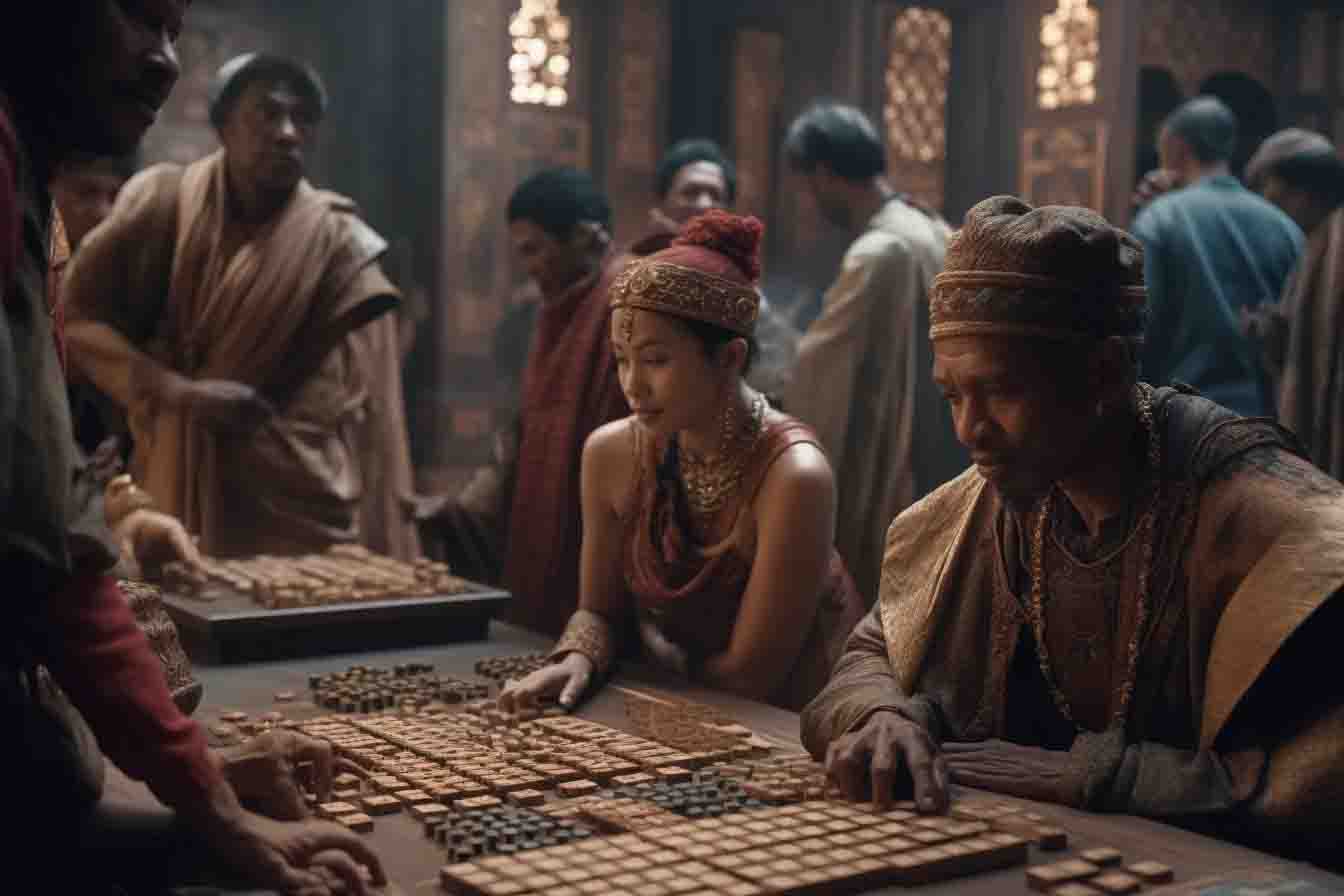
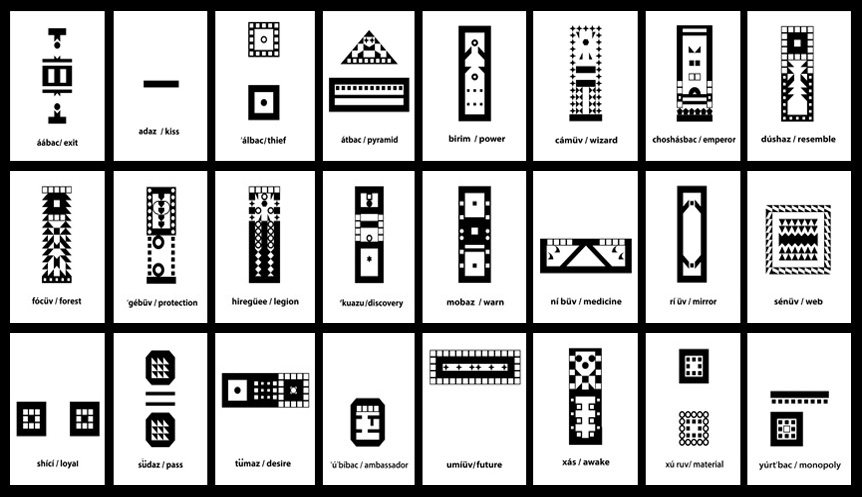
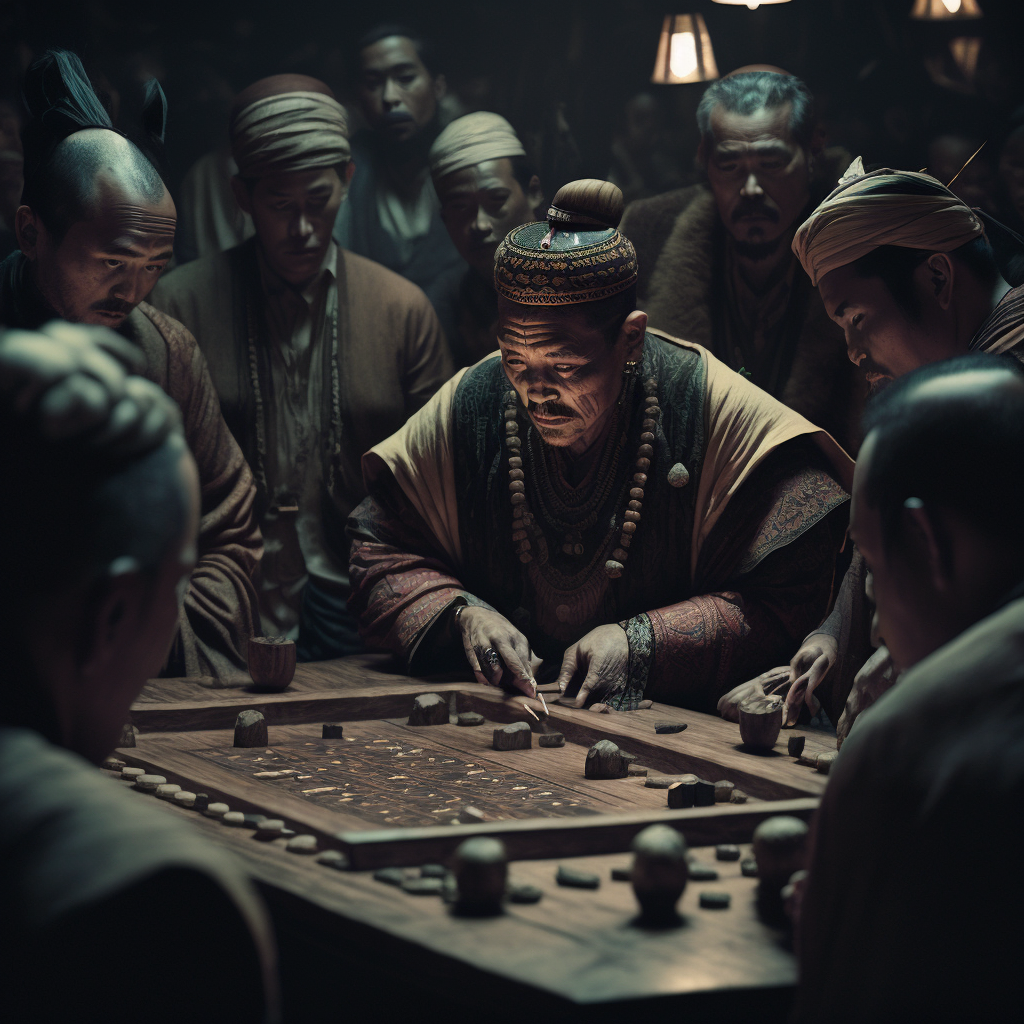
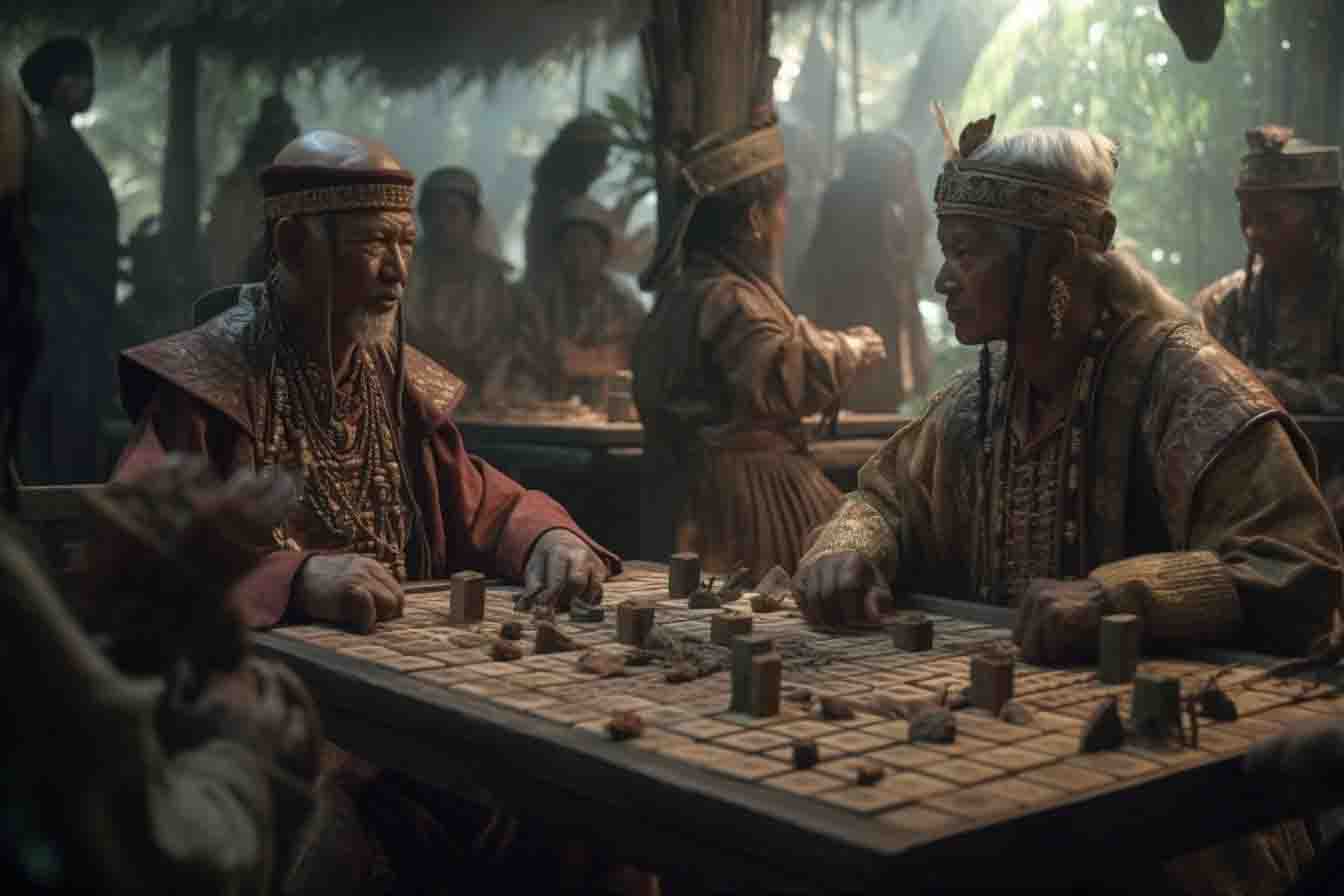
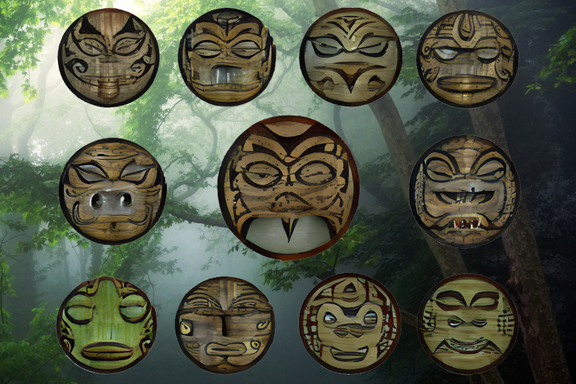
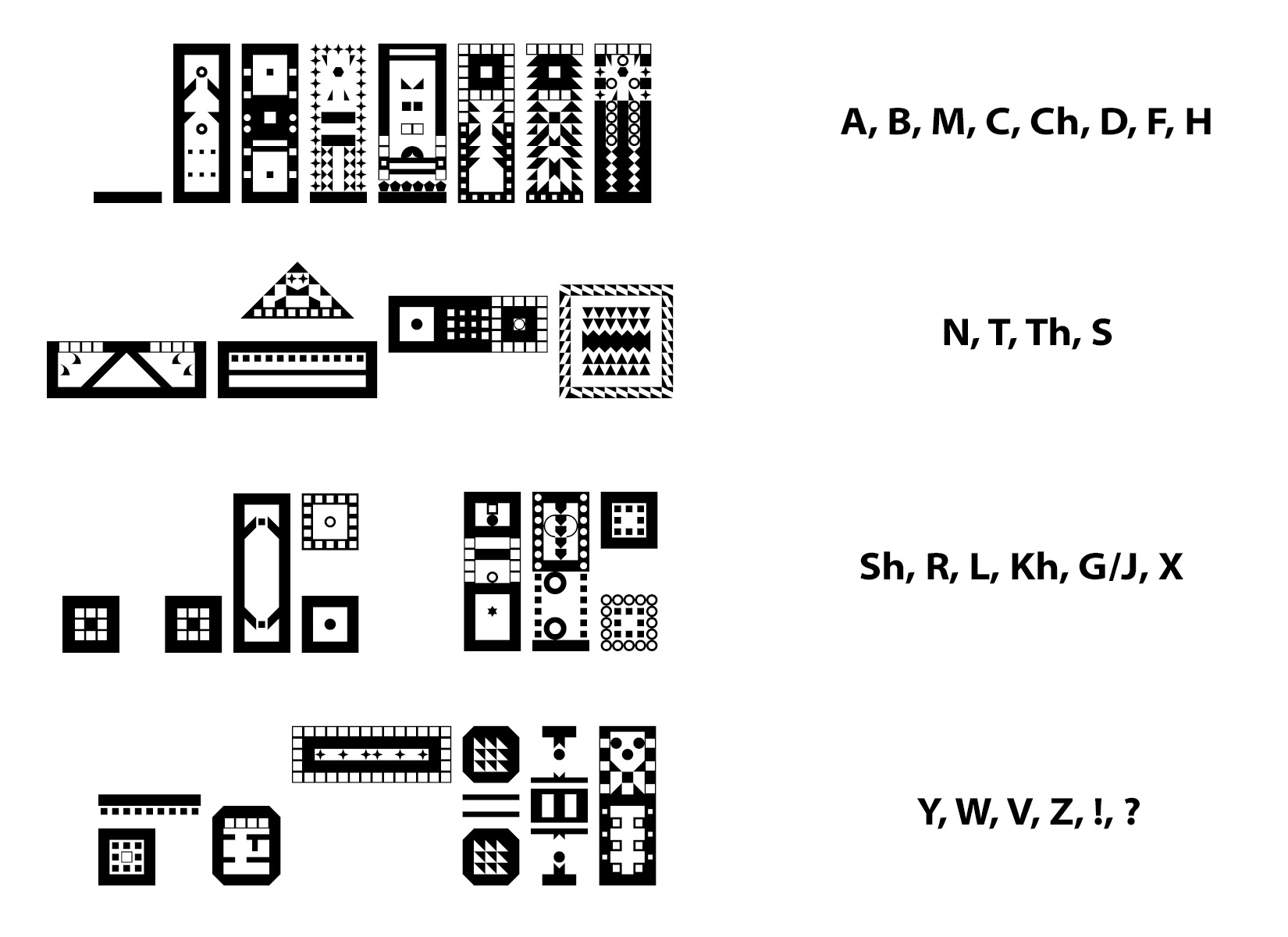
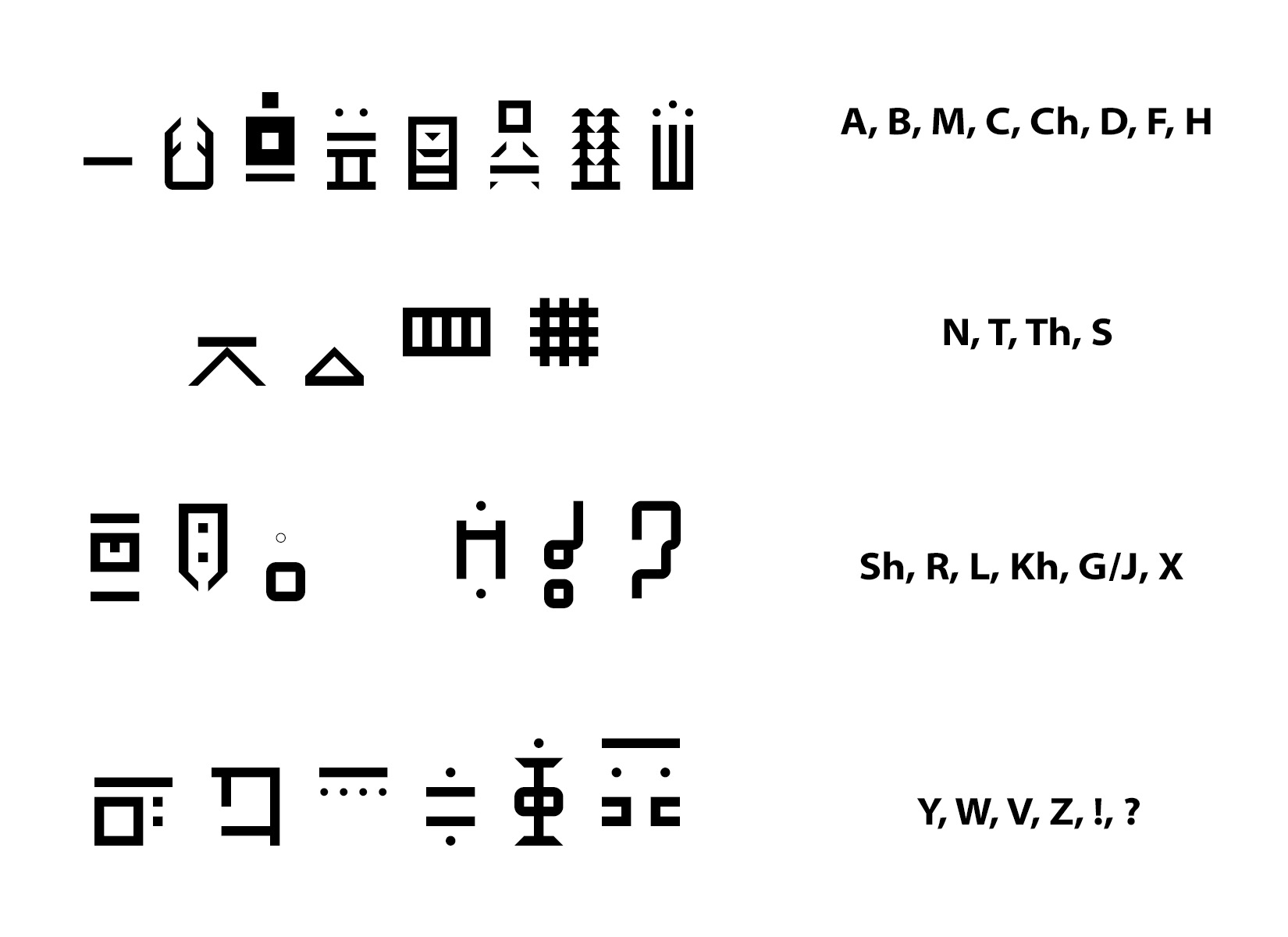
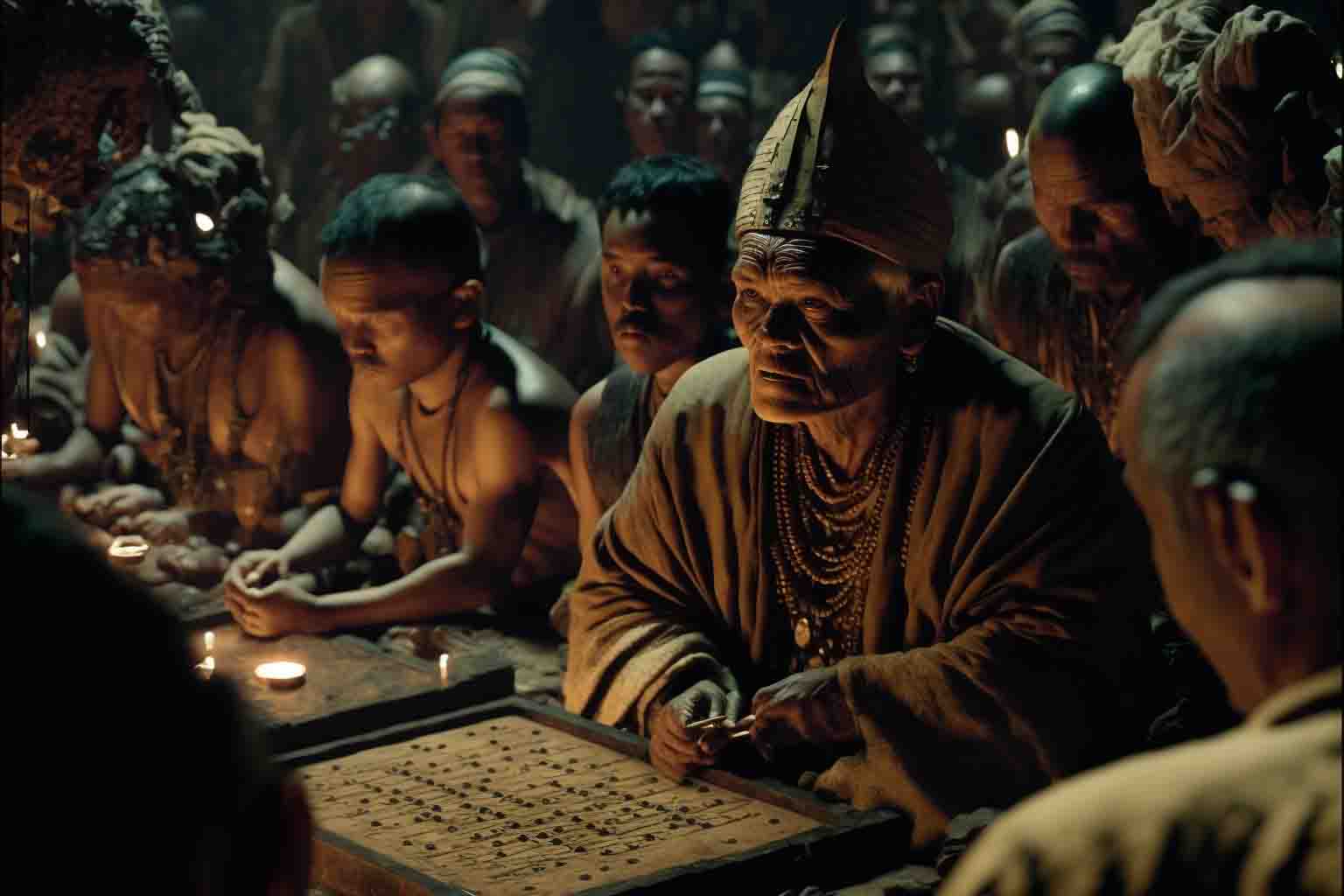
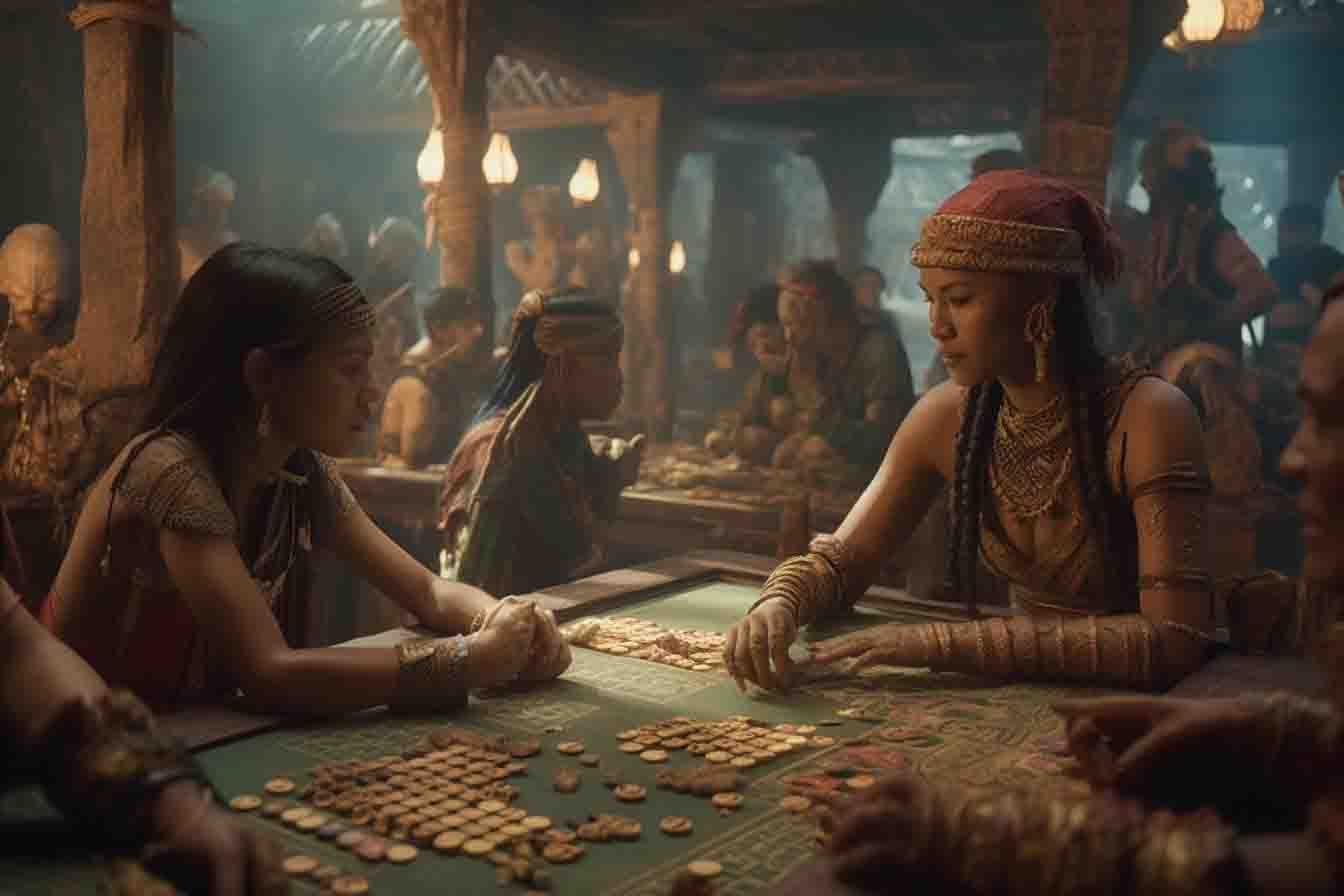

This is a really thorough and interesting article! The game tiles are beautifully designed, and I love how the game is weaved into the history and politics of the people who play it. Really well done. :)
Thanks so much!!